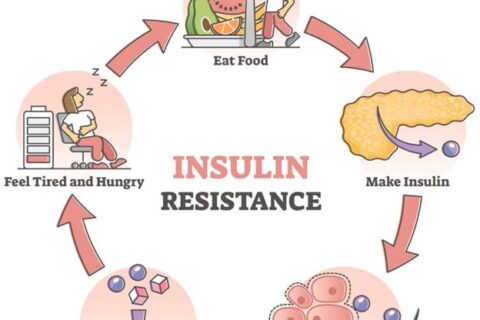Dealing With Diabetes
Sadly, the occurrence of diabetes in the U.S. has been on the rise since the 1970s. While researchers try to trace the causes, one thing is certain, if you have it, you are at risk of some serious complications that can spin off many other health issues before you even know you have the disease.
What Is Diabetes?
Diabetes is the condition where the body can no longer transform food into energy. After eating, the body should convert carbohydrates and other nutrients into glucose, a type of sugar, into fuel for your cells. When the glucose can’t reach the cells over a period of time, it remains in the blood and can potentially bring about heart disease, blindness and many other debilitating conditions. Blood tests determine whether a person has diabetes or may be at risk for it. Regular screenings take on greater importance as we age or if we show any of the signs of the disease.
Types of Diabetes
There are two main types of diabetes.
Type I (Type One)
Type I, commonly known as early-onset or juvenile diabetes, occurs when your pancreas stops producing the hormone insulin which ushers glucose into the cells to use for fuel. It strikes children and adolescents and develops because the immune system decides to attack the pancreas, the organ that produces insulin. Why this happens remains a mystery, but we do know that more and more children each year are getting Type I diabetes.
Type II (Type Two)
Type II diabetes happens to people older than 40 when the pancreas, that used to work just fine, stops producing insulin, or when the cells can’t take in the sugar from the blood no matter how much insulin the pancreas delivers. Blood sugar continues to rise while the kidneys work extra hard to expel the excess.
Fast Facts
- American minorities are at greater risk of Type II diabetes than Euro-Americans.
- Type I attacks white children more than minorities.
- Only about five percent of people develop Type I diabetes.
- Diabetics are twice as likely to develop heart disease.
- For working-age adults, diabetes is the primary cause of blindness.
- Anyone can get diabetes.
How to Recognize the Signs of Diabetes
While oftentimes people seem to have no symptoms indicating the onset of diabetes, it can produce some common signs that should be of concern. Those include:
- Increased need to urinate
- Increased thirst
- Unexplained fatigue
- Greater hunger
- Blurry vision
- Weight loss or extreme weight gain
- Wounds that take longer than usual to heal
- More frequent infections, especially of the skin, gums or bladder
- Darkened skin around the eyes which may also be sunken
You may have heard that being overweight can cause diabetes, but that isn’t exactly the case. Increased hunger can happen because your cells aren’t receiving the fuel they need to keep you functioning properly. Increased hunger leads to increased eating, often of starchy or sugary foods or junk and fast foods that provide little nutrition but a lot of calories. But even skinny people develop diabetes and never put on extra weight.
What if You Think You or Your Child May Have Diabetes
It’s one thing when your pancreas produces insulin that isn’t taken into the cells as it should be and quite another to have a pancreas that no longer puts out any insulin at all. Type I diabetes can be fatal in a hurry whereas Type II causes complications that can lead to death if not treated sooner or later. When diabetes strikes children, it’s usually Type I, although increasing numbers of kids now also contract Type II. If you see any signs in your child, especially fatigue, sunken eyes, increased bed-wetting and insatiable thirst, please take your child in for an evaluation immediately.
Dealing With It
Fortunately, diabetes responds well to treatment. It will, though, force some lifestyle changes whether you’re treating a child’s Type I or your own Type II. Children will need constant blood sugar monitoring with a home device and regular insulin shots throughout the day. Extreme care must be taken to avoid dangerously low blood sugar events which can plunge the child into a diabetic coma. This can easily happen over night, so frequent monitoring is a must.
For Type II, if it’s not too severe, often daily exercise and a specialized diet can keep your blood sugar under control without the use of medications or insulin. However, if the case is more advanced, many medications on the market can regulate glucose levels in conjunction with proper eating habits and exercise. Daily blood checks will also be a part of your life.
Dealing with diabetes may be challenging, but the sooner it is diagnosed, the easier it will go. You should get checked at least once per year so if you’re blood sugar levels keep rising, you can get on a treatment regimen quickly and reduce your chances of developing complications that may shorten your life.



















































































































































